How a 500-strong amateur choir became the centrepiece of the new Tate Modern
One of the world's most unique art spaces, the Turbine Hall, will host a performance by artist Peter Liversidge entitled "The Bridge"
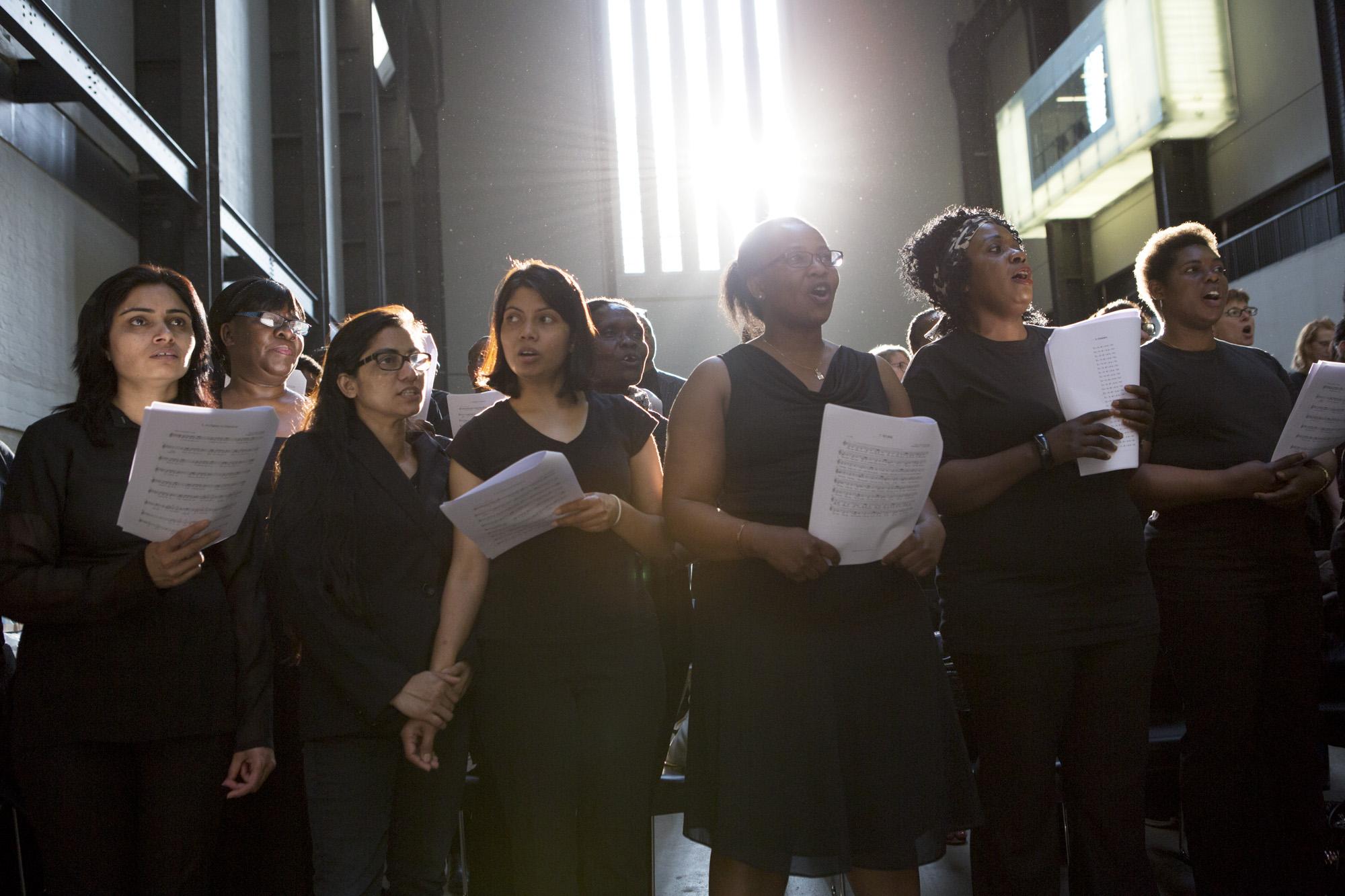
Tate Modern’s Turbine Hall is a strange place, so unique within London’s urban landscape; a place where sound seems to morph and twist with an almost phantom-like irregularity.
Whispers hover above heads like small clouds of secrecy, but a single shout? That will thunder into the roof spaces like a cavalry on charge, drilling into attendant ears and minds with nascent power. 35 metres high, 152 metres in length; the Turbine Hall stands as one of the world’s most formidable canvases, a place in which art imbues the epic and the unearthly.
It’s also a place of transformation. In 2003, The Weather Project seemed to strip the sun out of the sky and enclose it within the hall’s boundaries. In 2007, a fissure rose out of the ground and sliced its stone floors in two, entitled Shibboleth. It’s the Turbine Hall that remains the soul of the Tate Modern, even as the gallery prepares to open an entirely new complex; the Switch House, which will expand the internal space of the building by 60%.
And, it’s the Turbine Hall that hosts the centrepiece of the Switch House opening celebrations; serving as the venue for Peter Liversidge’s The Bridge, a collection of songs and vocalisations inspired by the public’s relationship with the building, and sung by a choir of 500 amateur singers.
“It is such a unique space in the contemporary art world,” Liversidge describes. “In the context of a contemporary museum the experience of the Turbine Hall is one of expectation, about being part of an artwork or more specifically the space with the work. If you go to experience a Turbine Hall installation, there will be a presence of, and more than likely, other people in that space, they become part of your experience part of the work.
“In the same way the audience will become part of the performance of The Bridge on 18 June, the space is made for group activity. I, you, we, will engage in that space with them. The audience will be part of that work as much as the work itself, by their physical presence in the space they will change the choral piece sounds.”
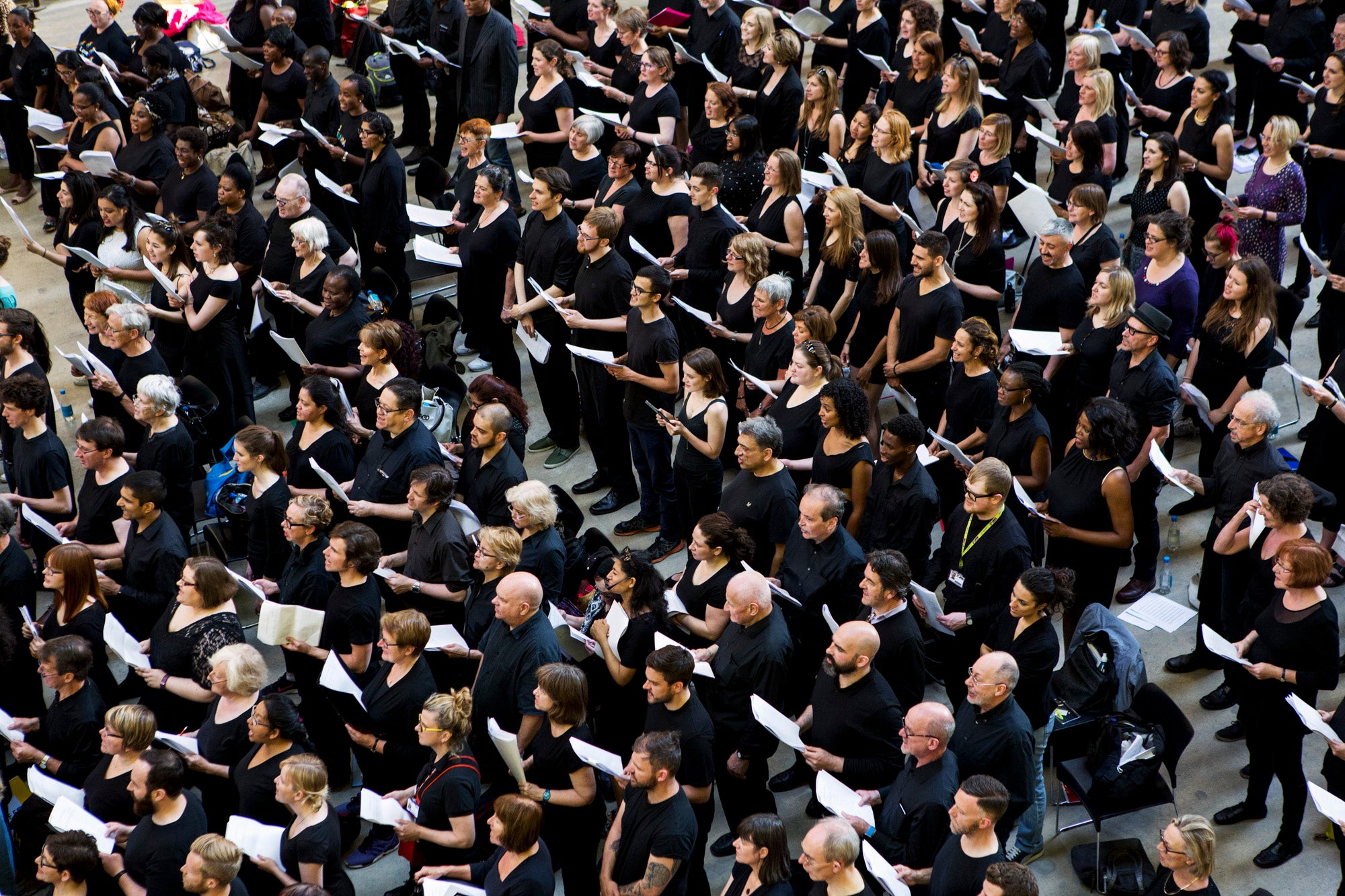
Indeed, this is a work dedicated to celebrating unity through individualism, which Liversidge notes is particularly pertinent amongst the current surge in the fracturing, isolating politics at play both in the UK and US. Here 24 choirs, utterly diverse in their nature, are brought together from across London to perform in unison.
“It’s actually very difficult to get a chorus of 500 people to sing exactly the same thing at exactly the same time,” he notes. “The most important thing here was the sense it’s the wider community coming to together and singing as one, as if they’re presenting this as a single thought, or as a single idea.”
Amongst the choirs is Solid Harmony, a young people’s choir directed by Naveen Arles, also director of the London International Gospel Choir. “It is very exciting to see the Tate team curate such a collaborative multi-arts experience that actually is accessible,” he stated. “I am proud to see a young peoples' choir from Newham, who had never even heard of the Tate Modern, get genuinely excited about delivering.”
The participating Micro Rainbow International’s Interfaith Choir is a group of LGBTI refugees and asylum seekers, providing a place of comfort and community for those who have been forced to flee their homes because of their sexual or gender identity. As MRI’s Jill Power explains, the choir’s priority is to provide a safe, light-hearted space in which to use creativity as a tool to combat isolation and to recover from trauma and emotional distress.
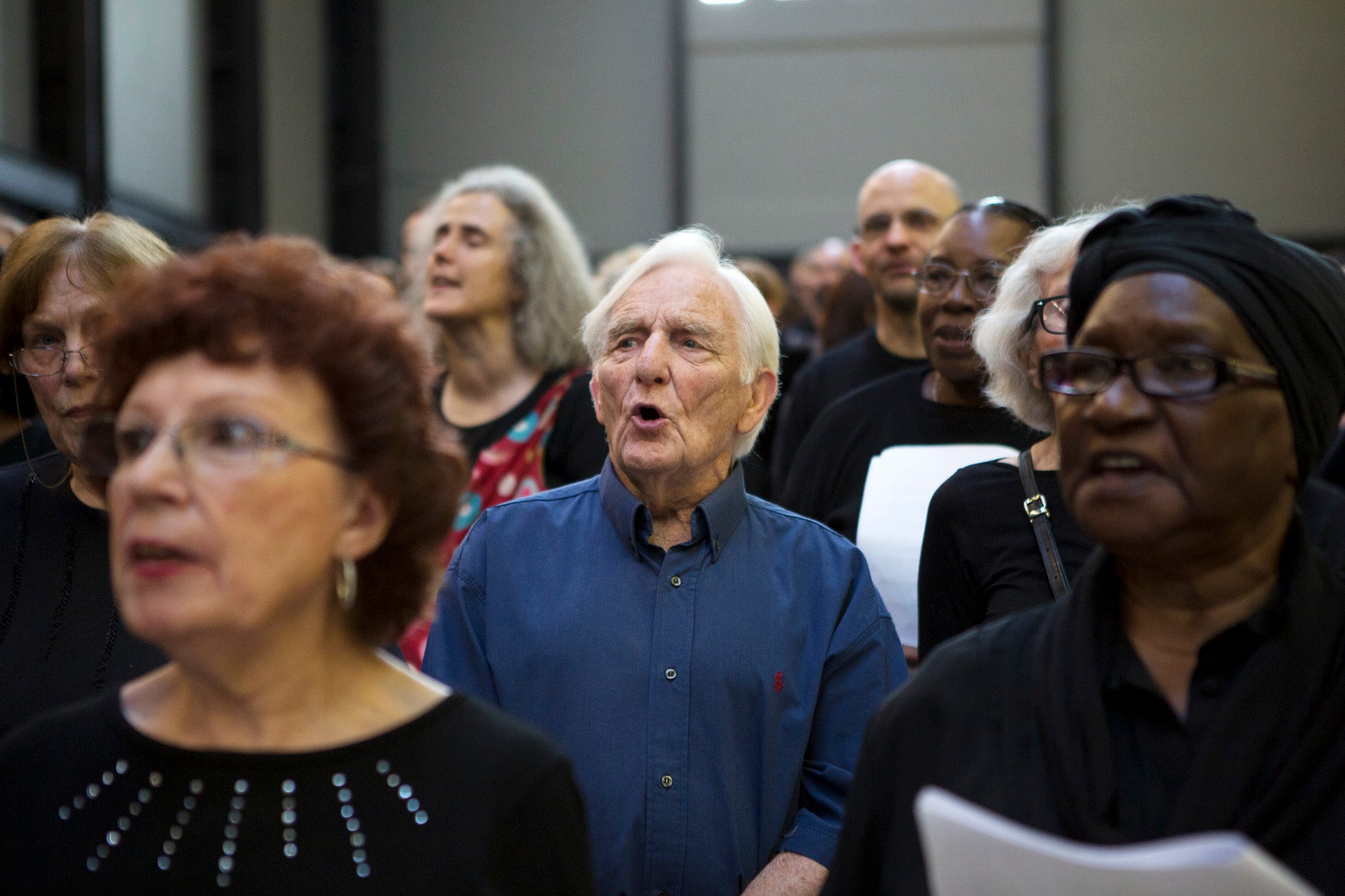
“Our initial reaction was excitement we get to be part of the wider community but also a bit of trepidation as we would step outside our safe bubble,” Power relayed. “People questioned whether they should be out as LGBTI refugees - especially as there is so much hostility in the tabloids around this issue. It felt daunting but at the same time thrilling to be part of 500 voices.”
“The Tate has been an inspirational place to be and is exactly the right place for us to be as it imbues our mission of healing through creativity. Everyone has said it feels atmospheric and creates a positive energy, which helps get through the week. We have loved being part of the 500 and part of this special project and community.”
Camilo Menjura leads the SOAS, a world choir; Stapleton Singers, and The Lolchoir, who sing an exclusively Latin American repertoire. 'When I received the invitation, I remembered that unique and powerful feeling that I've only felt when singing with lots of people around, and I wanted all the members of the choirs I lead to feel the same. It's going to be very special!”
Also featured is the UK-Japan Choir, founded by Jonathan Gregory to utilise music to found a deeper amicability and understanding between British and Japanese cultures. Gregory stated of the project, “We wondered whether it was our 'thing' but as our Japanese members are here often for just two or three years, we wanted to give them a full experience of London and its culture. So having sung Bach's St Matthew Passion in April, and also Japanese songs, we decided to get involved.”
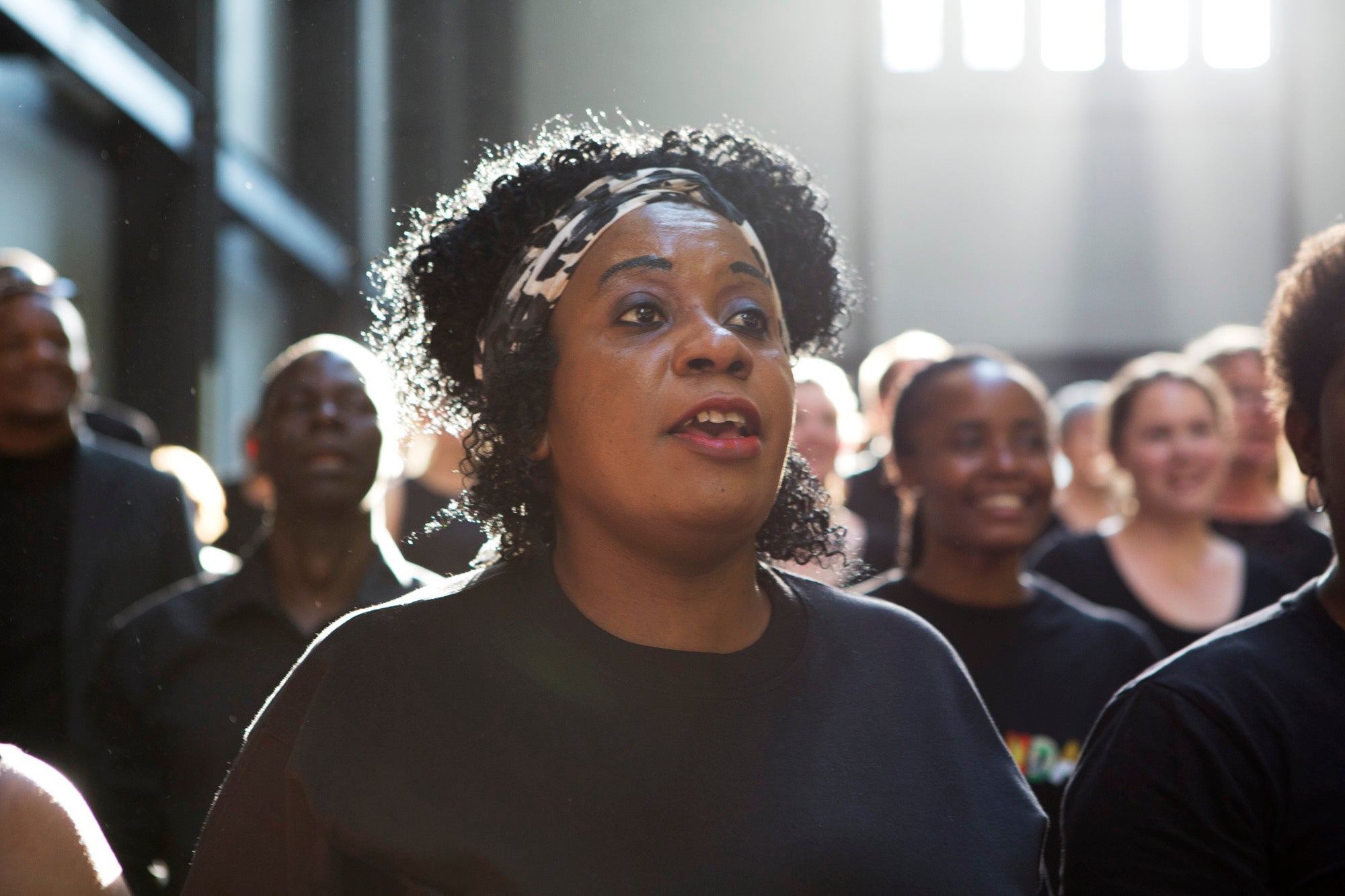
The choral piece is the third composed by Liversidge, He worked on The Bridge with the aid of Music Director and Conductor Esmeralda Conde Ruiz. Yet, the transition in medium was little barrier to his expression; as he explains, “Singing in unison, being in that space and dressing the singers all in black; it’s a temporary sculpture as much as it is a choral piece. It’s not necessarily using materials that I’m used to, but in the same way I might make a film or a piece of sculpture, the co-opted group become the same thing, they, the 500 singers, become material with which work is made.”
“I don’t see it as being that different to making a sculpture or a collage,” he continues. “Maybe collage is actually a really good way to describe the songwriting process; very simply put, it’s about carefully putting together parts.” Indeed, the artist acquired his compositional material by working over four months with Tate staff, volunteers, builders, architects, a range of community groups, and a local school from Southwark. An enterprise which took 45 hours of recordings, 17 notebooks; four months of collecting material, and three months of 14 hours a day shaping that material into its final form.
Gathered together is a document of intimate, and personal, experience; a tapestry of clipped thoughts and phrases, each documenting a different encounter with the gallery, its architecture, the collection, and visions of a new Tate Modern. It’s a piece that has developed its identity beyond the individual artist, towards collaborative ownership.
“It doesn’t belong to me anymore,” Liversidge notes. “It belongs to the group; they’re beginning to shape it themselves. They have the raw materials, but beyond that it’s them making sense of what that is. Singing it as one, but also as 500 individuals.”
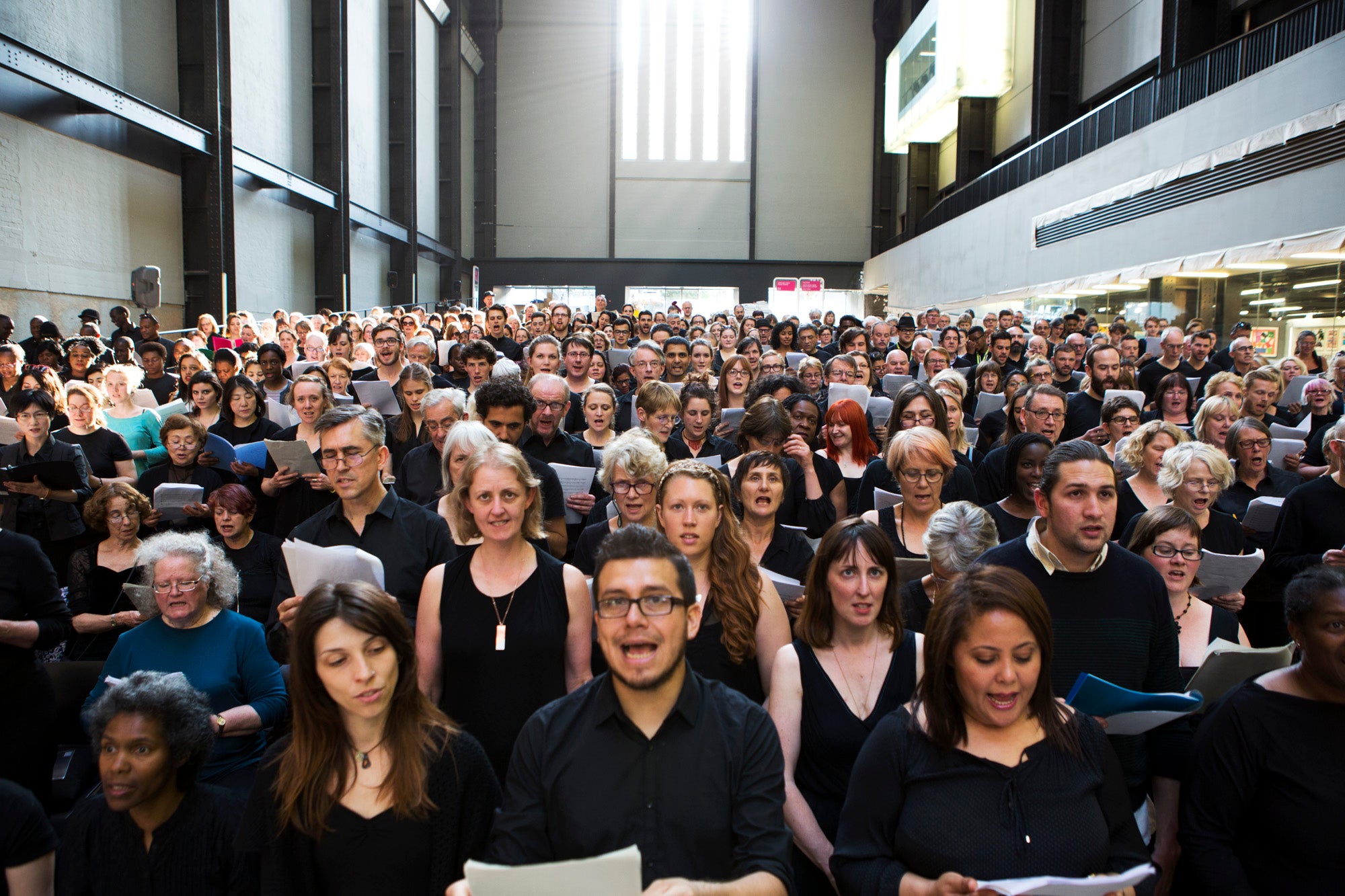
It’s also one pure in its simplicity, yet utterly profound in its presence; as Liversidge’s work makes the best advantage of the Turbine Hall’s acoustics to create an utterly unique, and near fantastical, audience experience. The echoed shouts of the choir can suddenly seem to resonate with the force of a ghostly battalion long past, yet their hums hang gently in the air with absolute fragility and delicacy.
The performance forms part of three weeks of live art, staged 17 June to 3 July; including the police horses of Tania Bruguera’s provocative Tatlin’s Whisper #5, and the queue of people that leads to nowhere in Roman Ondak’s Good Feelings for Good Times. It’s all part of Tate Modern’s increasingly revolutionary approach to art display; with its new collections looking beyond the traditional chronologies and genres, and towards how the modern experience of art has been shaped by its greatest pioneers.
Work in diverse forms – from paintings, film, installations, and performance – will feature over 300 artists from around the world; from Mark Rothko to Apichatpong Weerasethakul, from Salvador Dali to Marina Abramovic.
The new Tate Modern opens its doors to the public 17 June. The Bridge performance will be held at 5PM, 18 June.
Join our commenting forum
Join thought-provoking conversations, follow other Independent readers and see their replies
Comments